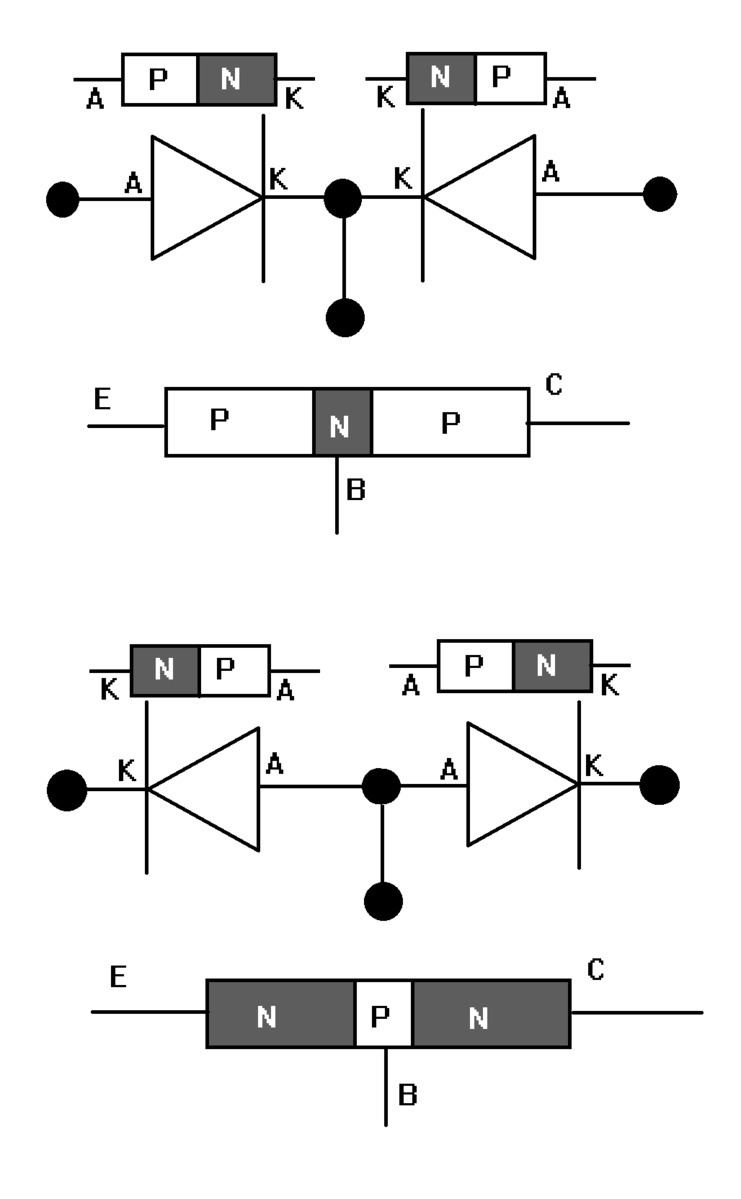 | ||
In a diode model two diodes are back-to-back connected to make a PNP or NPN bipolar junction transistor (BJT) equivalent.
Contents
This model is theoretical and qualitative.
NPN transistor
To make an NPN transistor, the anodes of both diodes are back-to-back connected to form a large P type base region. Example : If we are using the CE configuration then between Base and Emitter diode will be represented and between the base and collector dependent current source because collector current (Ic) is some constant times the base current(Ib).
PNP transistor
To make a PNP transistor, the cathodes of both diodes are back-to-back connected to form a large N type base region.
Base biasing
As the base region is a combination of two anodes or two cathodes, and is not lightly doped, more base biasing is required for making this model operational.
Links
https://en.wikiversity.org/wiki/Electronic_Circuits/Introduction_to_the_simple_diode_npn_model
https://learn.sparkfun.com/tutorials/transistors
https://cdn.sparkfun.com/assets/learn_tutorials/1/9/3/transistors-as-diodes.png
https://www.st-andrews.ac.uk/~www_pa/Scots_Guide/info/comp/active/BiPolar/page1.html
https://www.st-andrews.ac.uk/~www_pa/Scots_Guide/info/comp/active/BiPolar/dtob.gif
It is just a qualitative model, just for theoretical explanation. Not a Quantitative one. The junction barrier in actual- transistor is much thinner
https://www.quora.com/Why-cant-we-make-a-transistor-by-using-two-diodes-back-to-back
Also read
The emitter and collector , is practically not similar in structure.
